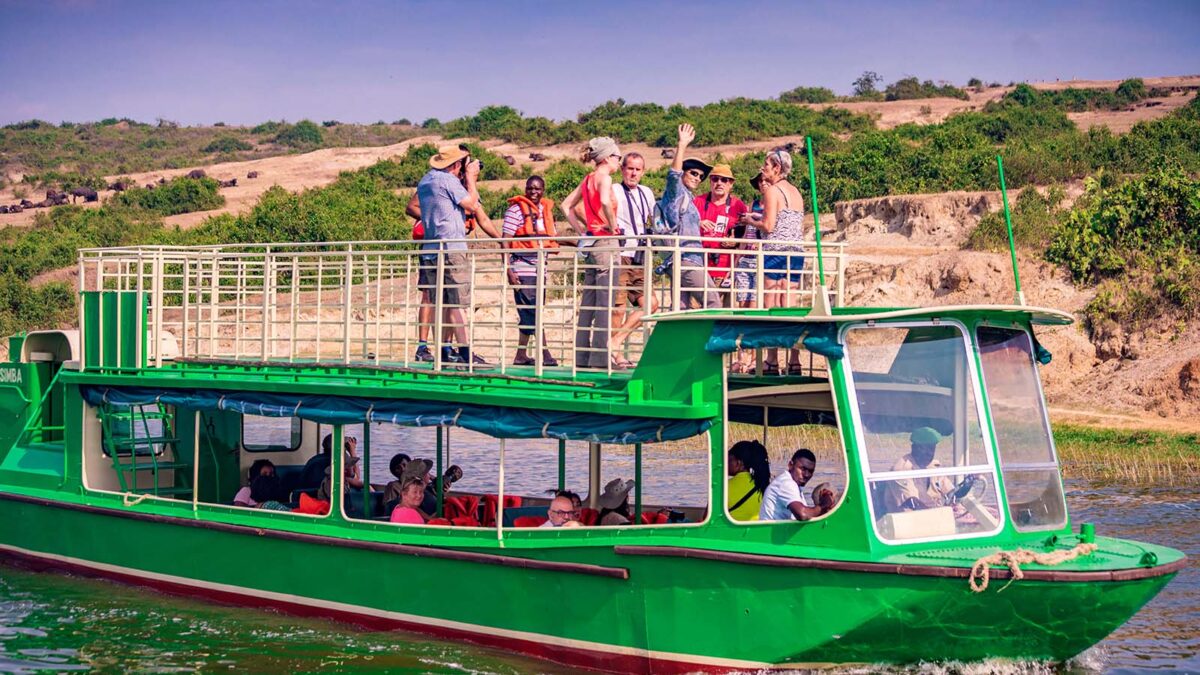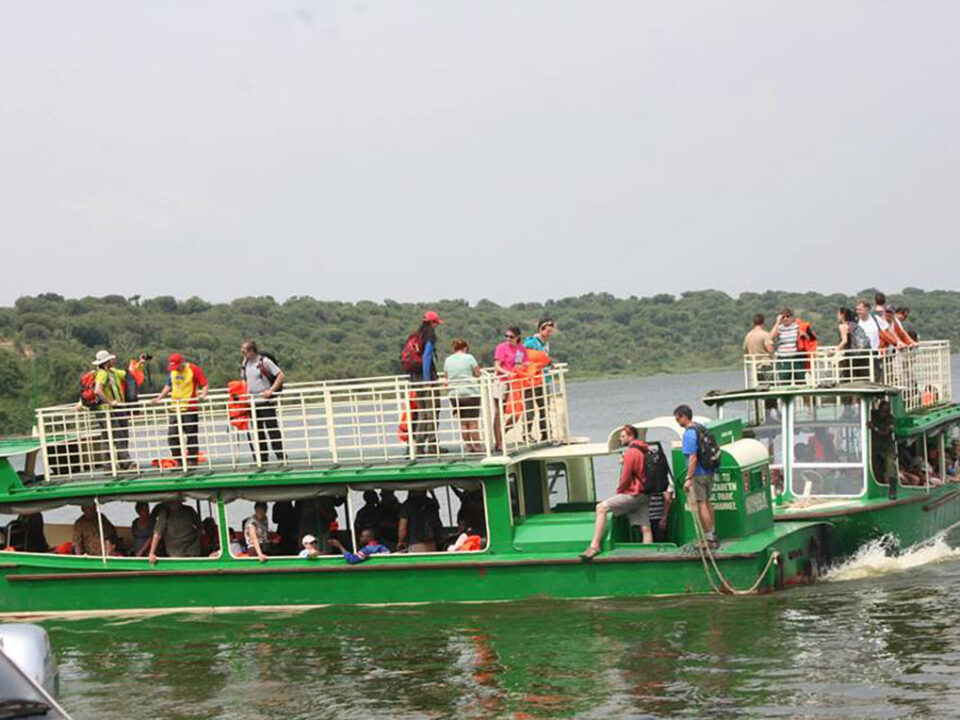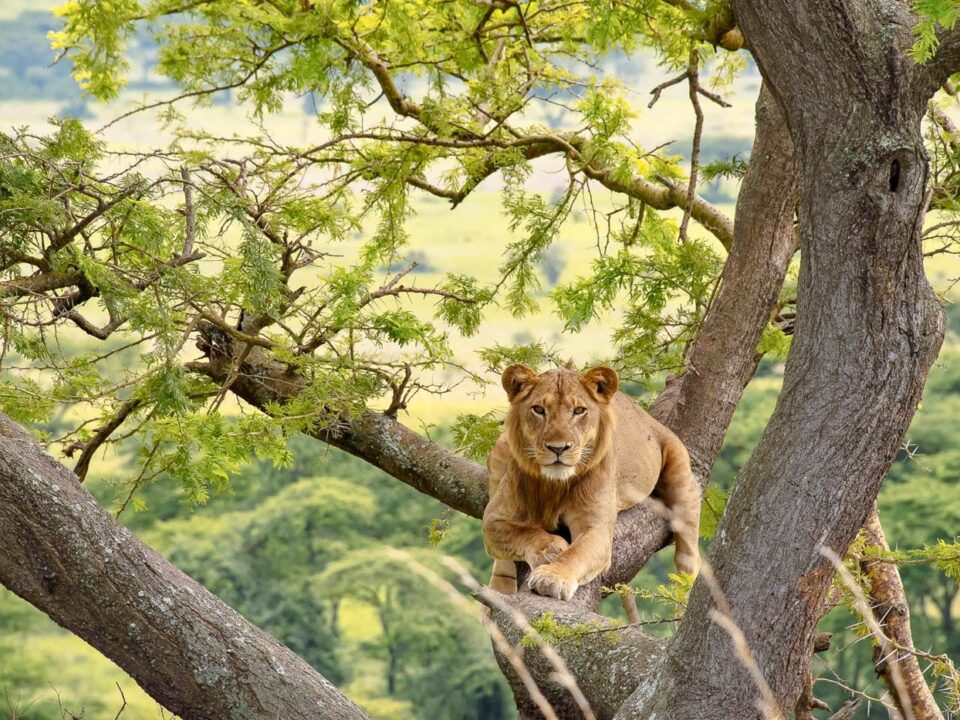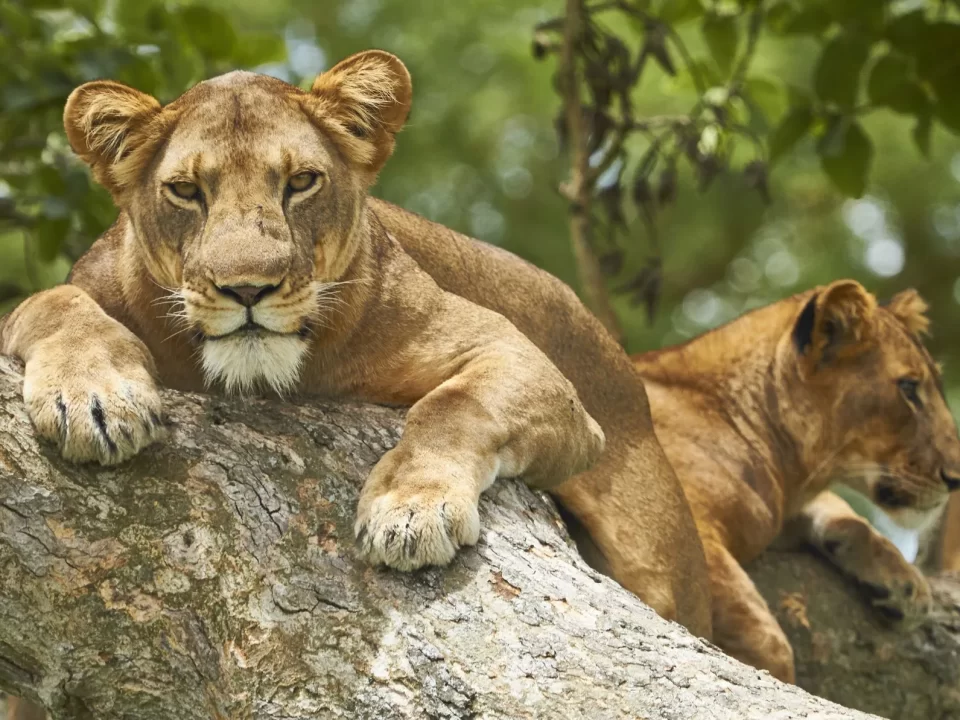Kazinga Channel in Queen Elizabeth National Park

Guide to Visiting Amboseli National Park
January 15, 2024
Filming Permits and Permissions in Uganda
January 16, 2024Explore the Rich Wildlife Along the Kazinga Channel in Queen Elizabeth National Park
Nestled within the vast expanse of Queen Elizabeth National Park, the Kazinga Channel stands out as a prominent natural feature, stretching across an impressive 32 kilometers. This expansive waterway seamlessly connects Lake George and Lake Edward, showcasing the park’s diverse ecosystem. The channel serves as a vital habitat, drawing an array of wildlife and bird species, solidifying its status as a major attraction within the national park.
The Kazinga Channel boasts an extraordinary concentration of hippos and Nile Crocodiles, making it one of the world’s most remarkable wildlife havens. Lake George, a relatively small lake with an average depth of 2.4 meters, is fed by streams originating from the Rwenzori Mountains. The channel serves as the outlet, draining into Lake Edward, with minimal fluctuations in water levels.
In 2005, an anthrax outbreak in the channel resulted in a significant loss of hippos. This outbreak was triggered by the consumption of remnants of vegetation during the driest months, containing bacterial spores that can endure for decades in dry soil. Despite such challenges, the Kazinga Channel remains a popular destination for wildlife tourism enthusiasts.
The Kazinga Channel, situated in Uganda, holds a special place within Queen Elizabeth National Park. Fed by streams from the Rwenzori Mountains, the channel attracts a congregation of major mammals to its shores, providing an exceptional opportunity for observing animals in their natural habitat.
The park is home to one of the world’s three largest hippo populations, totaling 1,600 individuals. The sheer abundance of wildlife, including Nile crocodiles, buffaloes, elephants, monitor lizards, and various antelope species, makes the Kazinga Channel a must-visit during an African safari in Uganda. Lucky visitors might even catch a glimpse of lions and leopards quenching their thirst along the channel’s shores.
Renowned as one of Uganda’s premier bird-watching spots, the Kazinga Channel boasts over 58 species, such as African skimmers, Black bee-eaters, Black Crake, Crested Crane, Darters, and various storks and pelicans. A boat cruise along the channel has become a top activity, contributing to Queen Elizabeth National Park’s status as the most visited park in Uganda.
Embark on a Wildlife Adventure with a Boat Cruise along the Kazinga Channel
A boat safari along the Kazinga Channel offers a captivating wildlife experience within Queen Elizabeth National Park. Since 1952, this leisurely boat cruise has provided a unique opportunity to spot large mammals congregating along the shores for drinking, feeding, and bathing.
The boat cruise, priced between USD50 to USD30, operates in shifts from 9:00 am to 5:00 pm, with each two-hour session commencing from the Mweya jetty. Visitors can choose between a smaller, more expensive boat or a double-decker option, with the latter providing a more private and comfortable experience. Besides the diverse array of animals, the cruise allows a glimpse into local fishing villages, especially in the late afternoon when fishermen prepare for their nighttime expeditions.
Due to the presence of dangerous hippos, fishermen avoid the waters in the early afternoon, resuming their activities during the night when the hippos graze on land. This coexistence adds an intriguing layer to the boat cruise experience, showcasing the delicate balance between wildlife and human activities.
Best time to Visit Kazinga Channel
The dry season stands out as the best time to explore the Kazinga Channel, transforming it into an oasis that attracts a plethora of park and domestic animals. This period ensures an abundance of opportunities to witness animals drinking, cooling off, and feeding along the shores. Bringing a good camera during the boat cruise is essential for capturing memorable moments, with late afternoon offering the ideal lighting conditions for stunning photographs.
For a comprehensive wildlife experience, consider the 3 days Queen Elizabeth National Park Safari organized by Trek Africa Expeditions. This safari combines a boat trip along the Kazinga Channel with game safaris in other sectors of the park. Both the boat cruise and morning/afternoon game safaris in the Kasenyi plains and Ishasha sectors promise a rich and diverse exploration of Queen Elizabeth National Park.
The Kasenyi plains, with their picturesque natural landscapes, provide incredible opportunities to spot buffaloes and elephants. The Eastern section of Kasenyi plains offers the best chance to witness ordinary African lions preying on the Uganda kobs roaming the area. Meanwhile, the Ishasha sector is renowned for its tree-climbing lions. Opting for a 4-day Queen Elizabeth National Park adventure allows ample time to delve into the park’s wonders and partake in a lion tracking experience in the Kasenyi plains.




